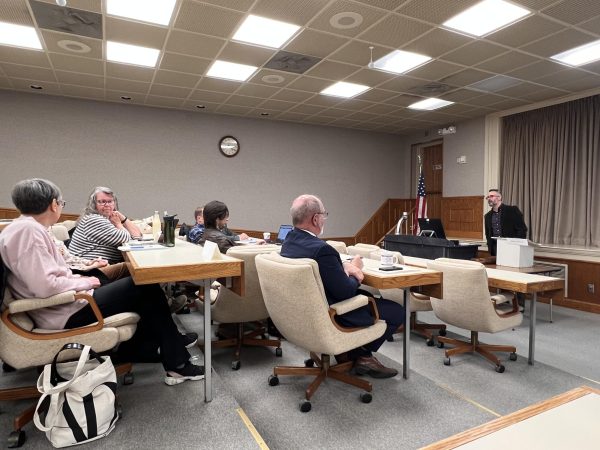AU scores “Well above” average on national test
November 18, 2010
Ashland University students took a national assessment test, the Collegiate Learning Assessment test (CLA test), and the results are in.
“We did very well, in fact, the Ashland University students ranked well above the national average for value added achievement, scoring in the 84th percentile of schools taking the test,” according to Provost Dr. Frank Pettigrew in a press release that can be found on the AU website.
The CLA was administered to 100 freshmen Oct. 2009 and to 100 seniors Feb. 2010. It is an online standardized assessment test for undergraduates geared to evaluate general critical thinking skills, according to a presentation on CLA tests by University Core Director William Vaughan.
The CLA was found to be an appropriate test for AU students to take due to its frequent use at other universities and colleges, as well as its relatively inexpensive costs and assessment of intellect, such as critical thinking and analytical reasoning, according to Vaughn.
“The tests were interesting and engaging because they were general performance tasks not tied to the content of any particular major,” Vaughan said. “They were geared towards one’s general intellectual skills.”
Vaughan continued by saying that results indicated that no matter what the student’s major, critical thinking and analytical reasoning skills improved as a result of coming to AU – improved to a greater degree than others.
John Bee, university assessment coordinator, agreed with Vaughan, saying that the student improvement from freshmen to senior was higher than thought.
“Our students gain more than the profile of our entering students would lead us to predict,” Bee said, “based on past academic performance, and comparatively more than 84 percent of the other institutions taking the CLA test.”
Incentives were given to both classes of students to come take the test, because it was not required for any class. Vaughan said that while the incentives helped, he was truly impressed by how the students took the test and respected the idea behind it.
“To the freshmen and seniors who took the test, thank you for the seriousness with which you took the test,” Vaughan said. “It was not tied to the GPA, grade or major and those who took the test seriously did very well. Thank you for having the integrity to do your best – it helps our institution improve itself at your benefit.”
Bee and Vaughan, along with Institutional Researcher Karen Little, interpreted and reported the results to AU’s faculty when the scores arrived.
The total CLA score in a value-added percentile ranking was 84 and students scored above average in the “critique-an-argument” category, scoring in the 87th percentile. These percentiles are only based on the schools that took this test, not on a nationalized level. On a chart showing “Observed CLA scores vs. expected CLA scores” a diagonal line showed the observed performance equal to expected performance.
The vertical distance from that line indicated the value added by the university; institutions that fell above that diagonal line were the schools that added more value than expected, based on a value-added model. Ashland scored above this line.
Among the schools that took the CLA were: Amherst College, Florida State University, University of Texas in Dallas, University of Hartford, Kent State University and The Ohio State University. This is not to say that Ashland did better than these schools, only that these schools were in contention with Ashland.
Ashland University had been under some pressure after it was indicated by the North Central Accreditation organization that AU was not doing enough in regards to assessments, according to the presentation by Vaughan.
AU will be having a ‘focus visit’ regarding the assessments in 2011. The CLA test helped AU take the right steps in achieving assessments. In the past, when core assessments were done, they were successful but also very labor intensive. The goal for CLA was to help utilize the university’s existing technology and help streamline assessments without draining the energies of the faculty members.
“This is about taking students far,” Vaughan said. “It’s something I’m passionate about.”
Vaughan said that the exit interviews with students had positive reactions, with many students thinking it was really cool and set up well. Many students said that it was fun to do and did not feel like a test.
Ashland now has proof that the core is working well and that no changes seem to be needed, due to the results AU received.
“The core is sound,” Vaughan said. “We have evidence it works. It’s the ‘common major’ everyone succeeds in – we don’t talk about it enough. This core is working exactly how we designed it and we’re very pleased.”











